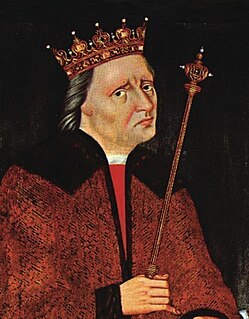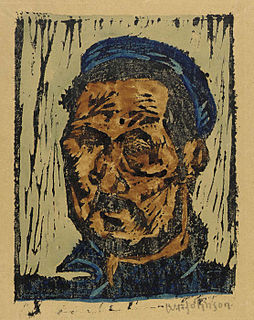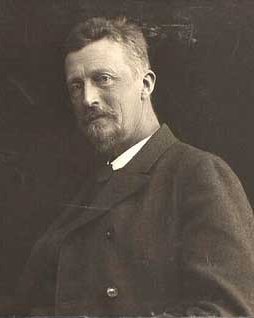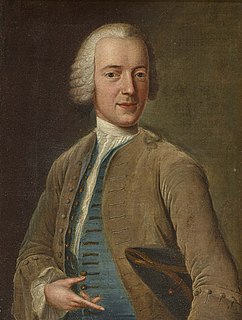
Schleswig is a town in the northeastern part of Schleswig-Holstein, Germany. It is the capital of the Kreis (district) Schleswig-Flensburg. It has a population of about 27,000, the main industries being leather and food processing. It takes its name from the Schlei, an inlet of the Baltic sea at the end of which it sits, and vik or vig which means "bay" in Old Norse and Danish. Schleswig or Slesvig therefore means "bay of the Schlei".

Christian I was a Scandinavian monarch under the Kalmar Union. He was king of Denmark (1448–1481), Norway (1450–1481) and Sweden (1457–1464). From 1460 to 1481, he was also duke of Schleswig and count of Holstein. He was the first king of the House of Oldenburg.

Anton Raphael Mengs was a German (Saxon) painter, active in Dresden, Rome and Madrid, who while painting in the Rococo period of the mid-18th century became one of the precursors to Neoclassical painting, which replaced Rococo as the dominant painting style.

The House of Glücksburg, shortened from House of Schleswig-Holstein-Sonderburg-Glücksburg, is a Dano-German branch of the House of Oldenburg, members of which have reigned at various times in Denmark, Norway, Greece and several northern German states.

Holstein-Gottorp or Schleswig-Holstein-Gottorp is the historiographical name, as well as contemporary shorthand name, for the parts of the duchies of Schleswig and Holstein, also known as Ducal Holstein, that were ruled by the dukes of Schleswig-Holstein-Gottorp. Other parts of the duchies were ruled by the kings of Denmark.

Nicolai Wilhelm Marstrand, painter and illustrator, was born in Copenhagen, Denmark, to Nicolai Jacob Marstrand, instrument maker and inventor, and Petra Othilia Smith. Marstrand is one of the most renowned artists belonging to the Golden Age of Danish Painting.

Victor Honorius Janssens or Victor Honoré Janssens was a Flemish painter of religious and mythological works and a tapestry designer. He spent a substantial period of his career abroad and worked in Germany, Italy, Vienna and London. He was court painter of Emperor Charles VI of Austria in Vienna. He is mainly known for his mythological and history paintings.

Johan Edvard Mandelberg, Swedish-born painter living in Denmark, was born at sea during a voyage between Stockholm and Livland, Sweden.

Carl Gustaf Pilo was a Swedish-born artist and painter. Pilo worked extensively in Denmark as a painter to the Danish Royal Court and as professor and director at the Royal Danish Academy of Art, as well as in his native Sweden.

Christopher, Count of Oldenburg was German count and regent in eastern Denmark between 1534–36 during the Count's Feud which was named after him.

William Henry Johnson was an American painter. Born in Florence, South Carolina, he became a student at the National Academy of Design in New York City, working with Charles Webster Hawthorne. He later lived and worked in France, where he was exposed to modernism. After Johnson married Danish textile artist Holcha Krake, the couple lived for some time in Scandinavia. There he was influenced by the strong folk art tradition. The couple moved to the United States in 1938. Johnson eventually found work as a teacher at the Harlem Community Art Center, through the Federal Art Project.

Swedish art refers to the visual arts produced in Sweden or by Swedish artists. Sweden has existed as country for over 1,000 years, and for times before this, as well as many subsequent periods, Swedish art is usually considered as part of the wider Nordic art of Scandinavia. It has, especially since about 1100, been strongly influenced by wider trends in European art. After World War II, the influence of the United States strengthened substantially. Due to generous art subsidies, contemporary Swedish art has a big production per capita.

Cornelis Norbertus Gijsbrechts or Gysbrechts was a Flemish painter working in Belgium, Germany, Denmark and Sweden in the second half of the seventeenth century. He specialised in trompe-l'œil, an artistic genre aiming to trick contemporary viewers into believing that the painted, two-dimensional illusions were real three-dimensional objects.

Marcus Gheeraerts was a Flemish artist working at the Tudor court, described as "the most important artist of quality to work in England in large-scale between Eworth and Van Dyck" He was brought to England as a child by his father Marcus Gheeraerts the Elder, also a painter. He became a fashionable portraitist in the last decade of the reign of Elizabeth I under the patronage of her champion and pageant-master Sir Henry Lee. He introduced a new aesthetic in English court painting that captured the essence of a sitter through close observation. He became a favorite portraitist of James I's queen Anne of Denmark, but fell out of fashion in the late 1610s.

Michael Sittow, also known as Master Michiel, Michel Sittow, Michiel, Miguel and many other variants, was a painter from Reval who was trained in the tradition of Early Netherlandish painting. For most of his life, Sittow worked as a court portrait painter, for Isabella of Castille, the Habsburgs and others in Spain and the Netherlands. He was one of the most important Flemish painters of the era.

Abraham Wuchters was a Dutch-Danish painter and engraver. He was born in Antwerp but had most of his career in Denmark where he and Karel van Mander III became the preferred painters of the Danish King, nobility and bourgeoisie. Together they represent the main influence from the Dutch Golden Age on Danish Baroque art.

August Andreas Jerndorff was a Danish painter who is best known for his portraits.

Johann Georg Ziesenis was a German – Danish portrait painter.

Hans Knieper was a Flemish painter and draughtsman. He became a court painter and tapestry cartoon designer at the Royal Danish Court and ran a tapestry weaving shop in Denmark.
Bendix Grodtschilling the Younger was a Danish painter.




















